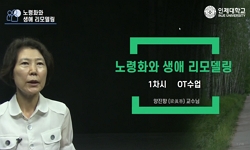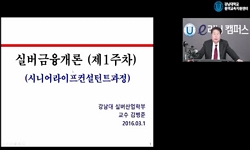Purpose: To investigate the prevalence of spina bifida occulta (SBO) and its relationship with the presence of overactive bladder (OAB) in middle-aged and elderly people in China. Methods: A cross-sectional community-based survey was carried out at 7 ...
http://chineseinput.net/에서 pinyin(병음)방식으로 중국어를 변환할 수 있습니다.
변환된 중국어를 복사하여 사용하시면 됩니다.
- 中文 을 입력하시려면 zhongwen을 입력하시고 space를누르시면됩니다.
- 北京 을 입력하시려면 beijing을 입력하시고 space를 누르시면 됩니다.



Prevalence of Spina Bifida Occulta and Its Relationship With Overactive Bladder in Middle-Aged and Elderly Chinese People
한글로보기https://www.riss.kr/link?id=A103572346
-
저자
Jun Wei Wu (Department of Urology, The First Affiliated Hospital of Zhengzhou University) ; Yu Rong Xing (The First Affiliated Hospital of Zhengzhou University) ; Yi Bo Wen (Department of Urology, The First Affiliated Hospital of Zhengzhou University) ; Tian Fang Li (The First Affiliated Hospital of Zhengzhou University) ; Quan De Feng (Department of Urology, The First Affiliated Hospital of Zhengzhou University) ; Xiao Ping Shang (The First Affiliated Hospital of Zhengzhou University) ; Yun Long Li (Department of Urology, The First Affiliated Hospital of Zhengzhou University) ; Jin Jin Feng (Department of Urology, The First Affiliated Hospital of Zhengzhou University) ; Xin Xin Wang (The First Affiliated Hospital of Zhengzhou University) ; Rong Qun Zhai (Department of Urology, The First Affiliated Hospital of Zhengzhou University) ; Xiang Fei He (Department of Urology, The First Affiliated Hospital of Zhengzhou University) ; Tao Chen (Department of Urology, The First Affiliated Hospital of Zhengzhou University) ; Xin Jian Liu (Department of Urology, The First Affiliated Hospital of Zhengzhou University) ; Jian Guo Wen (Department of Urology, The First Affiliated Hospital of Zhengzhou University)

- 발행기관
- 학술지명
- 권호사항
-
발행연도
2016
-
작성언어
English
- 주제어
-
등재정보
KCI등재,SCIE,SCOPUS
-
자료형태
학술저널
- 발행기관 URL
-
수록면
151-158(8쪽)
-
KCI 피인용횟수
5
- 제공처
-
0
상세조회 -
0
다운로드
부가정보
다국어 초록 (Multilingual Abstract)
Purpose: To investigate the prevalence of spina bifida occulta (SBO) and its relationship with the presence of overactive bladder (OAB) in middle-aged and elderly people in China.
Methods: A cross-sectional community-based survey was carried out at 7 communities in Zhengzhou City, China from December 15, 2013 to June 10, 2014, where residents aged over 40 years were randomly selected to participate. All of the participants underwent lumbosacral radiographic analysis and relevant laboratory tests. A questionnaire including basic information, past medical history and present illness, and the OAB symptom score was filled out by all participants. Chi-square tests and logistic regression were used for data analysis with a P-value of <0.05 denoting statistical significance.
Results: A total of 1,061 subjects were qualified for the final statistical analysis (58.8±11.7 years; male, 471 [44.4%]; female, 590 [55.6%]). The overall prevalence of SBO was 15.1% (160 of 1,061): 18.3% (86 of 471) in men and 12.5% (74 of 590) in women. Among these subjects, 13.7% (145 of 1,061) had OAB: 13.2% (62 of 471) in men and 14.1% (83 of 590) in women.
The results of logistic regression showed that age, SBO, history of cerebral infarction (HCI), and constipation were risk factors for OAB (P<0.05), while sex, history of childhood enuresis (HCE), body mass index (BMI), and diabetes mellitus (DM) were not (P>0.05). In men, age, SBO, and constipation were risk factors for OAB (P<0.05), while HCE, BMI, DM, HCI, and benign prostate hyperplasia were not (P>0.05). In women, age, SBO, and HCI were risk factors for OAB (P<0.05), while HCE, BMI, DM, vaginal delivery, and constipation were not (P>0.05).
Conclusions: The prevalence of SBO is high and it is related to OAB in middle-aged and elderly people in China.
참고문헌 (Reference)
1 Sakakibara R, "Uroneurological assessment of spina bifida cystica and occulta" 22 : 328-334, 2003
2 Giddens JL, "Urodynamic findings in adults with the tethered cord syndrome" 161 : 1249-1254, 1999
3 Abrams P, "The standardisation of terminology of lower urinary tract function:report from the Standardisation Sub-committee of the International Continence Society" 21 : 167-178, 2002
4 Chase J, "The management of dysfunctional voiding in children: a report from the Standardisation Committee of the International Children’s Continence Society" 183 : 1296-1302, 2010
5 Warder DE, "Tethered cord syndrome and occult spinal dysraphism" 10 : e1-, 2001
6 Kumar A, "Spina bifida: a diagnostic dilemma in paleopathology" 24 : 19-33, 2011
7 Boone D, "Spina bifida occulta:lesion or anomaly?" 36 : 159-161, 1985
8 Nejat F, "Spina bifida occulta: is it a predictor of underlying spinal cord abnormality in patients with lower urinary tract dysfunction?" 1 : 114-117, 2008
9 Kumar P, "Spina bifida occulta in functional enuresis" 72 : 223-225, 2005
10 Northrup H, "Spina bifida and other neural tube defects" 30 : 313-332, 2000
1 Sakakibara R, "Uroneurological assessment of spina bifida cystica and occulta" 22 : 328-334, 2003
2 Giddens JL, "Urodynamic findings in adults with the tethered cord syndrome" 161 : 1249-1254, 1999
3 Abrams P, "The standardisation of terminology of lower urinary tract function:report from the Standardisation Sub-committee of the International Continence Society" 21 : 167-178, 2002
4 Chase J, "The management of dysfunctional voiding in children: a report from the Standardisation Committee of the International Children’s Continence Society" 183 : 1296-1302, 2010
5 Warder DE, "Tethered cord syndrome and occult spinal dysraphism" 10 : e1-, 2001
6 Kumar A, "Spina bifida: a diagnostic dilemma in paleopathology" 24 : 19-33, 2011
7 Boone D, "Spina bifida occulta:lesion or anomaly?" 36 : 159-161, 1985
8 Nejat F, "Spina bifida occulta: is it a predictor of underlying spinal cord abnormality in patients with lower urinary tract dysfunction?" 1 : 114-117, 2008
9 Kumar P, "Spina bifida occulta in functional enuresis" 72 : 223-225, 2005
10 Northrup H, "Spina bifida and other neural tube defects" 30 : 313-332, 2000
11 Wang Y, "Prevalence, risk factors, and impact on health related quality of life of overactive bladder in China" 30 : 1448-1455, 2011
12 Fidas A, "Prevalence of spina bifida occulta in patients with functional disorders of the lower urinary tract and its relation to urodynamic and neurophysiological measurements" 298 : 357-359, 1989
13 Zhang W, "Prevalence and risk factors of overactive bladder syndrome in Fuzhou Chinese women" 25 : 717-721, 2006
14 Fidas A, "Prevalence and patterns of spina bifida occulta in 2707 normal adults" 38 : 537-542, 1987
15 Veenboer PW, "Paucity of evidence for urinary tract outcomes in closed spinal dysraphism: a systematic review" 112 : 1009-1017, 2013
16 Banakhar MA, "Pathophysiology of overactive bladder" 23 : 975-982, 2012
17 Hashim H, "Overactive bladder: an update" 17 : 231-236, 2007
18 Freeman RM, "Overactive bladder" 19 : 829-841, 2005
19 Guerra LA, "Outcome in patients who underwent tethered cord release for occult spinal dysraphism" 176 (176): 1729-1732, 2006
20 Drake MJ, "Model of peripheral autonomous modules and a myovesical plexus in normal and overactive bladder function" 358 : 401-403, 2001
21 Galloway NT, "Minor defects of the sacrum and neurogenic bladder dysfunction" 57 : 154-155, 1985
22 Pippi Salle JL, "Magnetic resonance imaging in children with voiding dysfunction: is it indicated?" 160 (160): 1080-1083, 1998
23 Mehdizadeh M, "Is there any association between Spina bifida occulta and primary vesicoureteral reflux?" 20 : 348-352, 2010
24 Samuel M, "Is spina bifida occulta associated with lower urinary tract dysfunction in children?" 171 (171): 2664-2666, 2004
25 Sutow WW, "Incidence of spina bifida occulta in relation to age" 91 : 211-217, 1956
26 Yamaguchi O, "Clinical guidelines for overactive bladder" 16 : 126-142, 2009
27 Gregerson DM, "Clinical consequences of spina bifida occulta" 20 : 546-550, 1997
28 Fitzgerald MP, "Childhood urinary symptoms predict adult overactive bladder symptoms" 175 (175): 989-993, 2006
29 Fujita Y, "An experimental study on spinal cord traction effect" 14 : 698-705, 1989
30 de Groat WC, "A neurologic basis for the overactive bladder" 50 (50): 36-52, 1997
31 Brading AF, "A myogenic basis for the overactive bladder" 50 (50): 57-67, 1997
동일학술지(권/호) 다른 논문
-
- 대한배뇨장애요실금학회
- Oğuz Mertoğlu
- 2016
- KCI등재,SCIE,SCOPUS
-
Electroanatomical Mapping of the Urinary Bladder
- 대한배뇨장애요실금학회
- Fawzy Farag
- 2016
- KCI등재,SCIE,SCOPUS
-
- 대한배뇨장애요실금학회
- 박근호
- 2016
- KCI등재,SCIE,SCOPUS
-
Implantable Devices for Sustained, Intravesical Drug Delivery
- 대한배뇨장애요실금학회
- 이승호
- 2016
- KCI등재,SCIE,SCOPUS
분석정보
인용정보 인용지수 설명보기
학술지 이력
| 연월일 | 이력구분 | 이력상세 | 등재구분 |
|---|---|---|---|
| 2023 | 평가예정 | 해외DB학술지평가 신청대상 (해외등재 학술지 평가) | |
| 2020-01-01 | 평가 | 등재학술지 유지 (해외등재 학술지 평가) |  |
| 2012-01-01 | 평가 | 등재 1차 FAIL (등재유지) |  |
| 2010-04-30 | 학술지명변경 | 한글명 : 대한배뇨장애요실금학회지 -> International Neurourology Journal외국어명 : The Journal of Korean Continence Society -> International Neurourology Journal |  |
| 2009-01-01 | 평가 | 등재학술지 선정 (등재후보2차) |  |
| 2008-01-01 | 평가 | 등재후보 1차 PASS (등재후보1차) |  |
| 2007-04-26 | 학술지명변경 | 한글명 : 대한배뇨장애 및 요실금학회지 -> 대한배뇨장애요실금학회지외국어명 : 미등록 -> The Journal of Korean Continence Society |  |
| 2007-03-13 | 학회명변경 | 한글명 : 대한배뇨장애 및 요실금학회 -> 대한배뇨장애요실금학회 |  |
| 2007-01-01 | 평가 | 등재후보학술지 유지 (등재후보1차) |  |
| 2006-03-29 | 학술지명변경 | 한글명 : 대한배뇨장애 및 요실금학회지 Vol.5, No.1 -> 대한배뇨장애 및 요실금학회지 |  |
| 2005-01-01 | 평가 | 등재후보학술지 선정 (신규평가) |  |
학술지 인용정보
| 기준연도 | WOS-KCI 통합IF(2년) | KCIF(2년) | KCIF(3년) |
|---|---|---|---|
| 2016 | 1.74 | 0.51 | 1.26 |
| KCIF(4년) | KCIF(5년) | 중심성지수(3년) | 즉시성지수 |
| 0.96 | 0.75 | 0.628 | 0.03 |




 KCI
KCI






